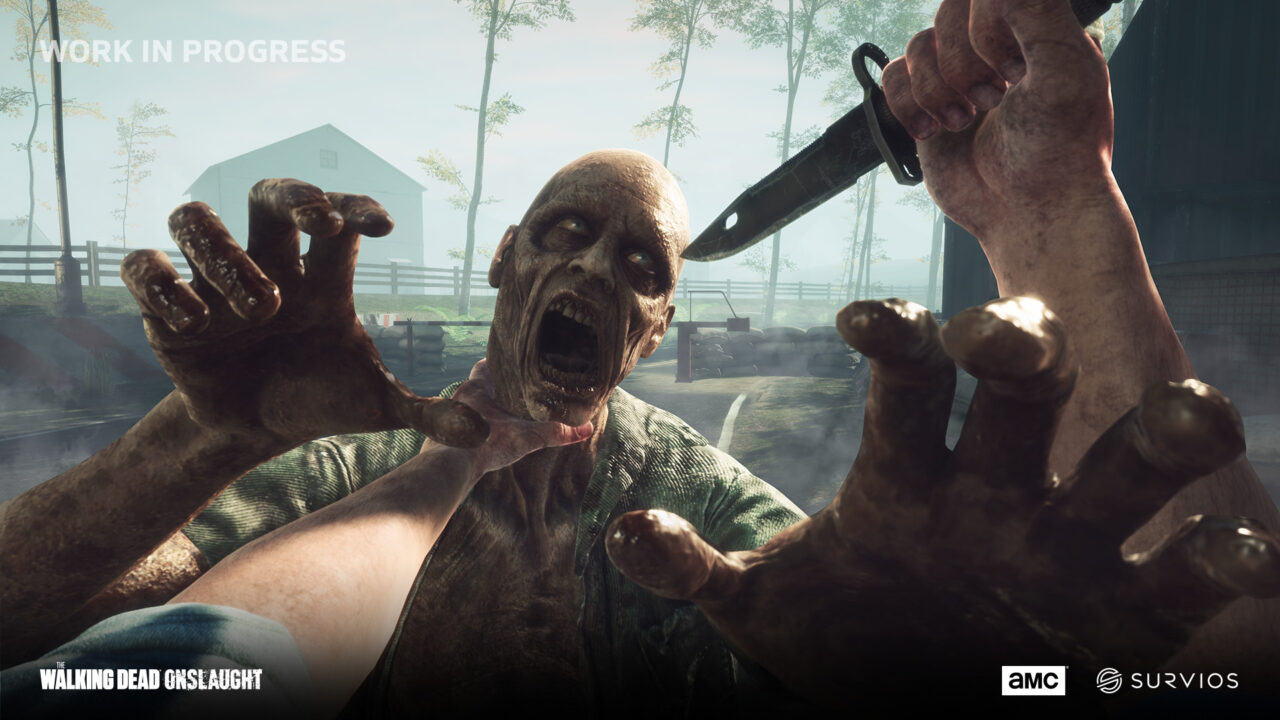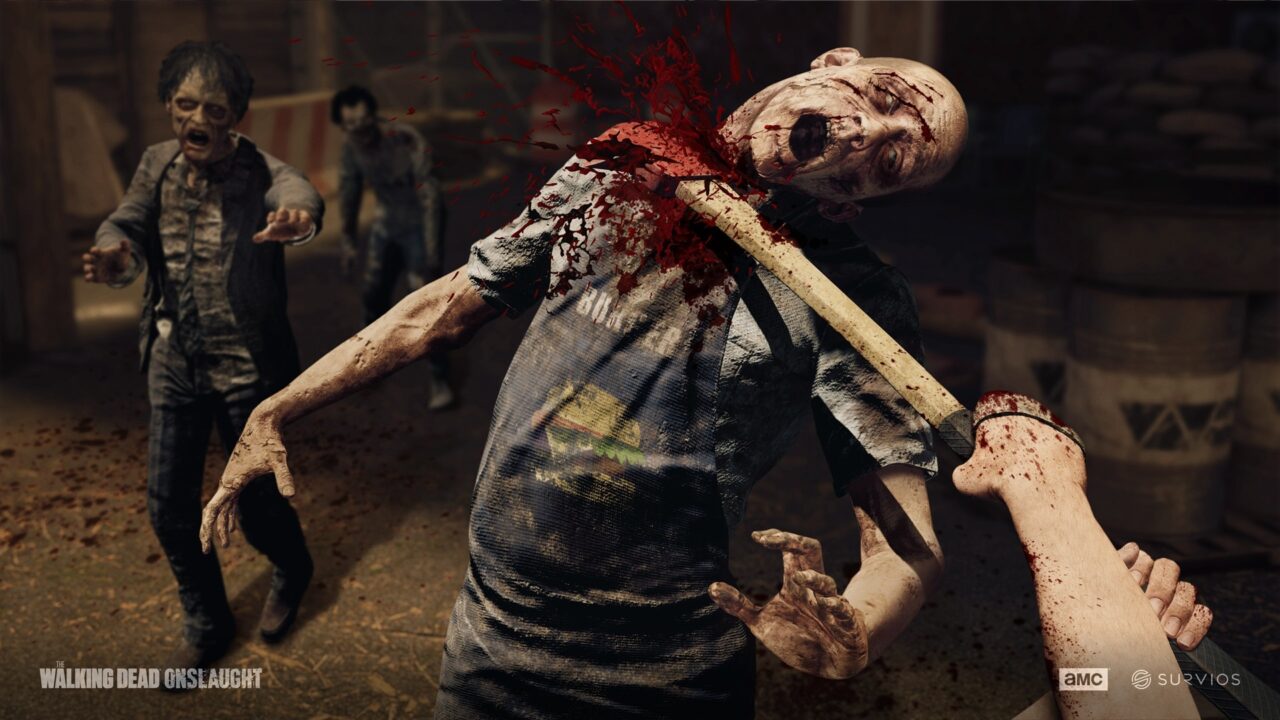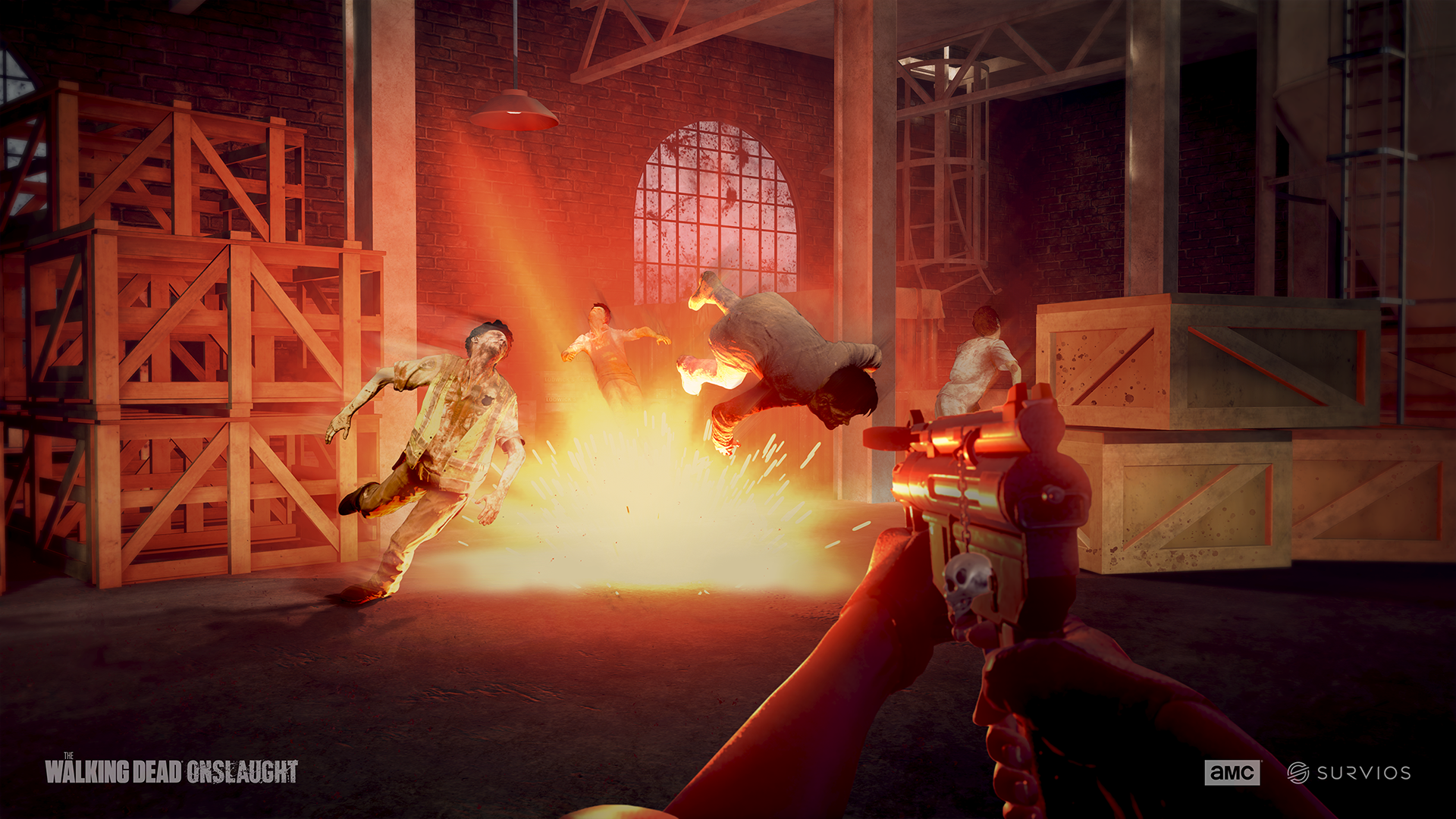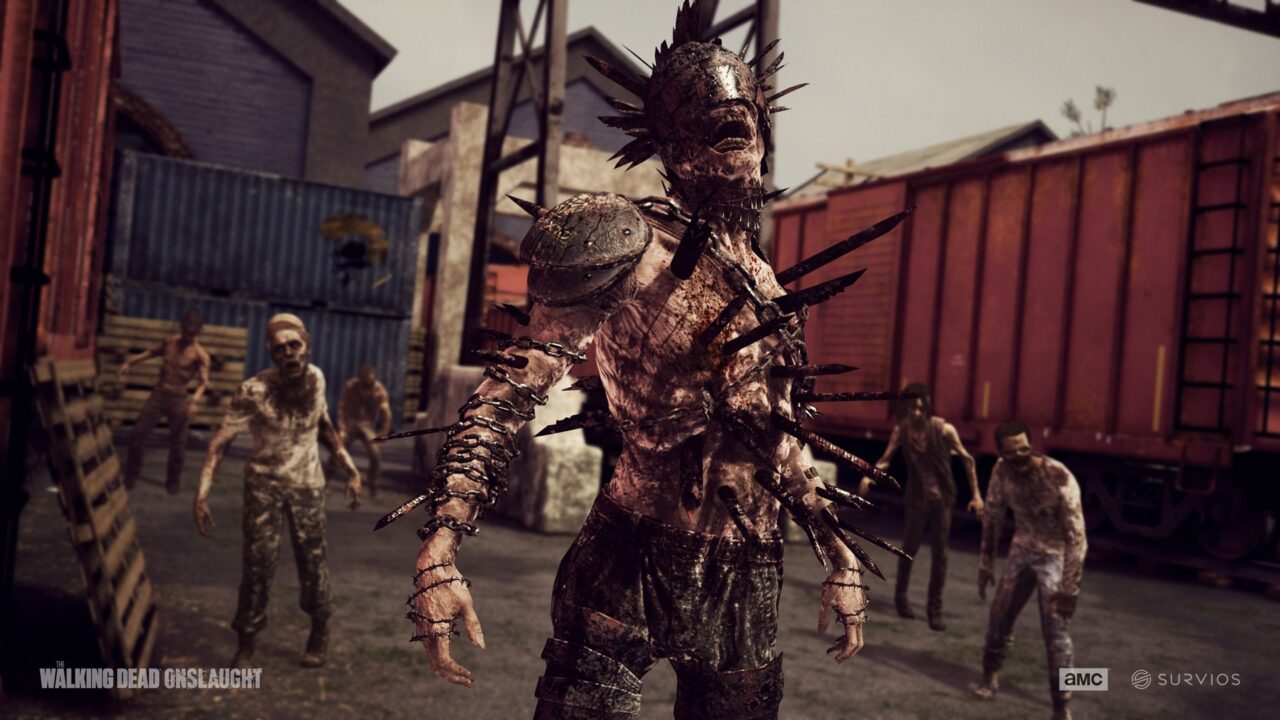The Walking Dead: Onslaught Review – Stabbing Zombies For Fun and Profit

Developed and published by Survios
Available on HTC Vive, Oculus Rift, Valve Index, and PlayStation VR
MSRP $29.99
If there’s one thing done super well by VR, it’s letting you shoot things. It’s a very enjoyable activity that always leads to a good time. This is basically what The Walking Dead: Onslaught is about. You shoot zombies (or, as The Walking Dead calls them, walkers) and have a good time while doing it, all while in an original story based on the popular TV show. Plus, you get to play as Norman Reedus in VR, and that’s important. Is it important enough to make the game worth playing though?
The Walking Dead: Onslaught is basically broken into two separate games. One of them follows Daryl Dixon, played by Norman Reedus, on a quest to find a lost girl that he ran into. It has him traveling through various overrun quarantine zones, destroyed villages, and survivor camps, all while trying to save this girl. The other half of Onslaught has you play as either Rick Grimes, Michonne, or Carol Peletier (Of the three, only Melissa McBride reprises her role from the show) as they try to collect supplies and build up the town of Alexandria. Here there’s no real story, you just run slightly randomized levels while collecting supplies that you’ll use to build buildings that provide upgrades and modify weapons.

While I like the idea of the two modes, this quickly becomes frustrating because campaign levels are locked behind finding survivors in the other mode. You need to find a certain amount of food to get a new survivor, which usually doesn’t take too long, but it does mean you have to constantly stop playing the campaign to go run random survivor missions. Actually following the game’s story becomes frustrating, because it means getting it slowly drip fed. You’ll learn some detail and want to see what happens next, but have to stop and save more survivors along the way. It’d be a lot nicer if these two modes were kept separate from each other.
Thankfully, no matter the mode, you get to enjoy the important and fulfilling act of walker murder. At the start of the game, you’re armed with little more than a pistol and knife, but before it’s over you’ll have shotguns, assault rifles, katanas, cleavers, and a host of other weapons. There’s a real simple joy to lobbing off a zombie’s arm, or even head, with one well-placed swing. Likewise, walking into a group of walkers with just a shotgun and taking them out one by one is a feeling that’s hard to replicate. It’s the little things. The way walkers fall apart when hit is always fun to behold, and when you discover you can literally hold zombies with one hand and drive a knife into their head with another? Great times all around.

However, at the start of the game, the balance feels all sorts of wonky. The knife is noticeably more powerful than your pistol to the point where it’s almost ridiculous. I grabbed a walker by the neck and proceeded to put bullets into its head at point-blank to see how many it would take. The answer was three. Comparatively, a quick stab to the head was all I needed to bring down a walker. There doesn’t really seem to be much reason to making the early guns so hilariously weak, but thankfully things improve once the bigger guns come into play.
Cool guns or no, at least Onslaught‘s levels provide plenty of fun. The campaign has a good chunk of interesting situations to fight through. One has Daryl running from a group of walkers accidentally stirred up by a cop car. Another sees him fighting through a church’s graveyard while walkers crawl out of the graves. At one point I found a lever-action rifle in a pub and then promptly had to defend it from attack, which I’m nearly positive was a big Shaun of the Dead reference. These situations made me more than happy every time I unlocked a new campaign level.

What the random missions don’t have in unique moments, they make up for in just being generally tense. There’s two types of missions: either you’ll be moving through zones outpacing a hoard of walkers while collecting supplies, or surviving in an arena for a set amount of time. The first batch was my favorite of the two. There’s something just straight up dramatic about being followed by a giant hoard of enemies, even if they’re just represented by a dark fog and shadowy 2D sprites. It was always thrilling to look behind me and realize that I’m not moving as fast as I thought, and needed to pick up the pace a little bit if I wanted to survive. It also meant having to make the difficult decision to leave some items behind, though at least I could always do more runs as needed.
If there’s one detail that Onslaught consistently gets right, it’s making it feel like I’m really doing damage with my attacks. When I hit a walker I could see them deform in rather interesting, and often grotesque, ways. Hammers would cave in faces and knives would cut off jaws. I’m nearly positive that, should I have put my mind to it, I could have used a blade to carve my name into a zombie. It may not seem like much, but a little feature like this does a lot to really drive home that I was actually in the world of The Walking Dead.

Sure it may have its problems, but by the end I still had a pretty fun time with The Walking Dead: Onslaught. Is it the best VR game I’ve ever played? Nah. But if I’m just looking for some occasional solid thrills, there’s a lot worse to be had. While it may take a bit of time to really build up the kind of arsenal that you would want to kill walkers with, even at the start there’s a kind of dumb joy to just taking a knife and running a zombie through with it. I wish I could have just played the campaign without the mandatory filler, but at least I was usually having fun no matter what I was doing. Also I looked down and realized by head was attached to Norman Reedus’ body, and that’s wonderful.
Categorized:Reviews

